Related Research Articles
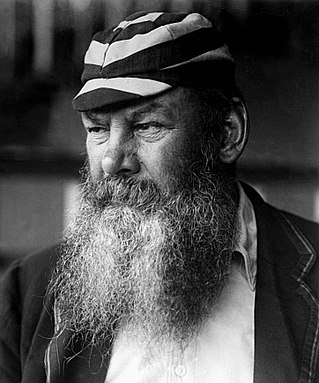
William Gilbert Grace was an English amateur cricketer who was important in the development of the sport and is widely considered one of its greatest players. He was nominally amateur as a cricketer, but he is said to have made more money from his cricketing activities than any professional cricketer. He was an extremely competitive player and, although he was one of the most famous men in England, he was also one of the most controversial on account of his gamesmanship and moneymaking.
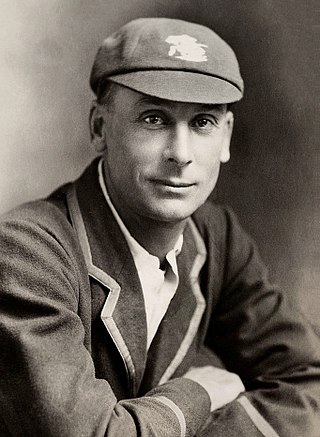
Sir John Berry Hobbs was an English professional cricketer who played for Surrey from 1905 to 1934 and for England in 61 Test matches between 1908 and 1930. Known as "The Master", he is widely regarded as one of the greatest batsmen in the history of cricket. He is the leading run-scorer and century-maker in first-class cricket, with 61,760 runs and 199 centuries. A right-handed batsman and an occasional right-arm medium pace bowler, Hobbs also excelled as a fielder, particularly in the position of cover point. Hobbs was named as one of the five Wisden Cricketers of the Century alongside Sir Donald Bradman, Sir Garfield Sobers, Shane Warne, and Sir Viv Richards.

Sir Leonard Hutton was an English cricketer. He played as an opening batsman for Yorkshire County Cricket Club from 1934 to 1955 and for England in 79 Test matches between 1937 and 1955. Wisden Cricketers' Almanack described him as "one of the greatest batsmen in the history of cricket". He set a record in 1938 for the highest individual innings in a Test match in only his sixth Test appearance, scoring 364 runs against Australia, a milestone that stood for nearly 20 years. Following the Second World War, he was the mainstay of England's batting. In 1952, he became the first professional cricketer of the 20th century to captain England in Tests; under his captaincy England won the Ashes the following year for the first time in 19 years.
The Wisden Cricketers of the Year are cricketers selected for the honour by the annual publication Wisden Cricketers' Almanack, based primarily on their "influence on the previous English season". The award began in 1889 with the naming of "Six Great Bowlers of the Year", and continued with the naming of "Nine Great Batsmen of the Year" in 1890 and "6 Great Wicket-Keepers" in 1891.
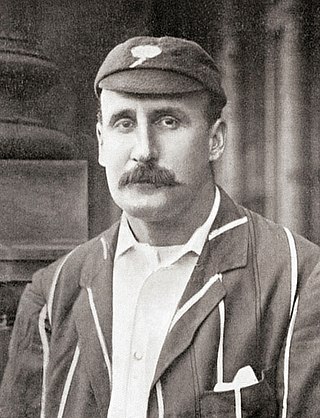
Martin Bladen Hawke, 7th Baron Hawke, generally known as Lord Hawke, was an English amateur cricketer active from 1881 to 1911 who played for Yorkshire and England. He was born in Willingham by Stow, near Gainsborough, Lincolnshire, and died in Edinburgh. He appeared in 633 first-class matches, including five Test matches, as a righthanded batsman, scoring 16,749 runs with a highest score of 166 and held 209 catches. He scored 13 centuries and 69 half-centuries.

Wilfred Rhodes was an English professional cricketer who played 58 Test matches for England between 1899 and 1930. In Tests, Rhodes took 127 wickets and scored 2,325 runs, becoming the first Englishman to complete the double of 1,000 runs and 100 wickets in Test matches. He holds the world records both for the most appearances made in first-class cricket, and for the most wickets taken (4,204). He completed the double of 1,000 runs and 100 wickets in an English cricket season a record 16 times. Rhodes played for Yorkshire and England into his fifties, and in his final Test in 1930 was, at 52 years and 165 days, the oldest player who has appeared in a Test match.
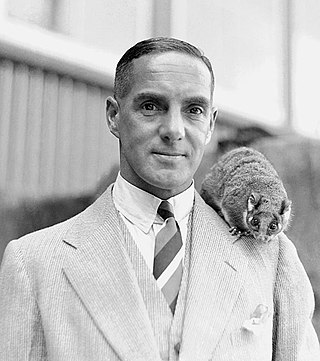
Herbert Sutcliffe was an English professional cricketer who represented Yorkshire and England as an opening batsman. Apart from one match in 1945, his first-class career spanned the period between the two world wars. His first-class debut was delayed by the First World War until 1919 and his career was effectively terminated in August 1939 when he was called up for military service in the imminent Second World War. He was the first cricketer to score 16 centuries in Test match cricket. He is most famous for being the partner of Jack Hobbs and the partnership between the two, Hobbs and Sutcliffe, is widely regarded as the greatest partnership of all time.
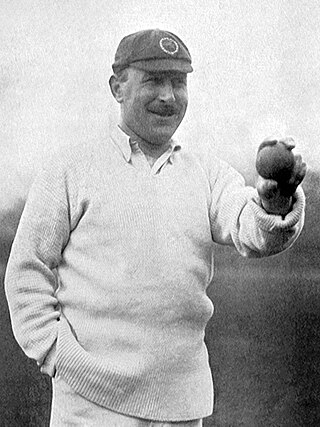
George Herbert Hirst was a professional English cricketer who played first-class cricket for Yorkshire County Cricket Club between 1891 and 1921, with a further appearance in 1929. One of the best all-rounders of his time, Hirst was a left arm medium-fast bowler and right-handed batsman. He played in 24 Test matches for England between 1897 and 1909, touring Australia twice. He completed the double of 1,000 runs and 100 wickets in an English cricket season 14 times, the second most of any cricketer after his contemporary and team-mate Wilfred Rhodes. One of the Wisden Cricketers of the Year for 1901, Hirst scored 36,356 runs and took 2,742 wickets in first-class cricket. In Tests, he made 790 runs and captured 59 wickets.

Thomas Walter Hayward was an English first-class cricketer who played for Surrey and England between the 1890s and the outbreak of World War I. He was primarily an opening batsman, noted especially for the quality of his off-drive. Neville Cardus wrote that he "was amongst the most precisely technical and most prolific batsmen of any time in the annals of cricket." He was only the second batsman to reach the landmark of 100 first-class centuries, following WG Grace. In the 1906 English season he scored 3,518 runs, a record aggregate since surpassed only by Denis Compton and Bill Edrich in 1947.
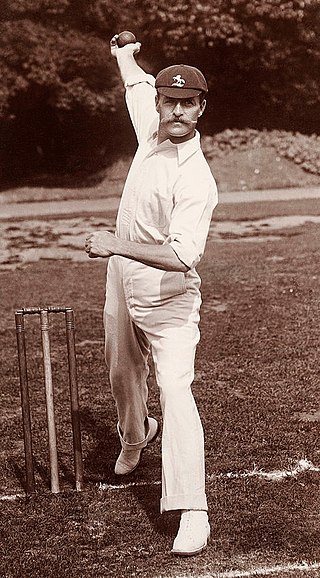
Alec Hearne was a member of the famous cricketing Hearne family. He played as a professional for Kent County Cricket Club between 1884 and 1906 and made one Test match appearance for England. He was an all-rounder who was named as one of Wisden's five Cricketers of the Year in 1894. His father, George played cricket for Middlesex during the 1860s and brothers George and Frank also played Test cricket, as did his cousin, John Thomas Hearne.

1919 was the 26th season of County Championship cricket in England and the first since 1914. The authorities had doubted if cricket would remain popular after a four-year break and the strain of war. It was decided that County Championship matches should be reduced from three days' duration to two, but cricket had not lost its popularity and the two-day experiment was a failure. Yorkshire finished the season as champions, topping the table by four percentage points. No Test cricket was played but an Australian Imperial Forces team toured England, playing matches from mid-May until mid-September. Andy Ducat, Patsy Hendren, Percy Holmes, Herbert Sutcliffe and Ernest Tyldesley were named in the 1920 edition of Wisden Cricketers' Almanack as the Five Cricketers of the Year for their 1919 performances.
1908 was the 19th season of County Championship cricket in England. American John Barton "Bart" King topped the bowling averages as a member of the touring Philadelphian cricket team.
1909 was the 20th season of County Championship cricket in England and featured a Test series between England and Australia. Kent won the championship and Australia, captained by Monty Noble, won the Test series.
1869 was the 83rd season of cricket in England since the foundation of Marylebone Cricket Club (MCC). The Cambridgeshire club went into demise, though a team called Cambridgeshire later played in two specially arranged matches, in 1869 against Yorkshire and in 1871 against Surrey. After that, Cambridgeshire ceased to be a first-class team. The problem was attributed to the lack of available amateurs to back up the famous trio of Bob Carpenter, the first Tom Hayward and George Tarrant, along with the absence of useful patronage and the difficulty of obtaining membership which led to a debt deemed unpayable.
1871 was the 85th season of cricket in England since the foundation of Marylebone Cricket Club (MCC). Derbyshire County Cricket Club became a first-class club and the last matches were played by Cambridgeshire, who in the days of Bob Carpenter, the first Tom Hayward and George Tarrant had been one of the leading cricket counties.
Variations in published cricket statistics have come about because there is no official view of the status of cricket matches played in Great Britain prior to 1895 or in the rest of the world prior to 1947. As a result, historians and statisticians have compiled differing lists of matches that they recognise as (unofficially) first-class. The problem is significant where it touches on some of the sport's first-class records, especially in regards to the playing career of W. G. Grace.

Charles Augustus Ollivierre was a Vincentian cricketer who represented the West Indies in matches before they attained Test match status. Born in St Vincent, Ollivierre initially played first-class cricket for Trinidad; he was selected to tour England with the West Indies team in 1900. He later qualified to play first-class cricket for Derbyshire between 1901 and 1907, becoming the first black West Indian to play for an English county. Ollivierre was reasonably successful in county cricket and had a reputation as a stylish batsman. However, he dropped out of first-class cricket after 1907 owing to eye trouble.

Herbert Sutcliffe made his first-class debut for Yorkshire in the 1919 season, during which he and Percy Holmes developed one of county cricket's greatest opening partnerships. After initial success, Sutcliffe had a couple of relatively lean seasons before fulfilling his promise in 1922. In 1924, he made his debut for England in Test cricket and formed a famous Test opening partnership with Jack Hobbs. He enjoyed personal success on the 1924–25 MCC tour of Australia, although England lost the Test series 4–1 to Australia. In the 1926 Ashes series against Australia, Hobbs and Sutcliffe produced a series-winning partnership at The Oval in difficult batting conditions. By the end of the 1927 season, Sutcliffe was one of the world's premier cricketers and was being considered, although he was a professional, for the captaincy of Yorkshire.

During the five years 1928 to 1932, Herbert Sutcliffe played throughout the period for Yorkshire, continuing his highly successful opening partnership with Percy Holmes which reached its peak of achievement in 1932 when they set a then world record partnership for any wicket of 555, the stand including Sutcliffe's career highest score of 313. For England in Test cricket, Sutcliffe made his only tour of South Africa in 1927–28 and his second tour of Australia in 1928–29, during which he played arguably the greatest innings of his career. In the winter of 1930–31, he and Jack Hobbs went on a private tour of India and Ceylon which has caused some controversy in terms of their career statistics. Sutcliffe opened the innings for England throughout the period, playing in home series each season but most notably against Australia in 1930.

Sir John Berry "Jack" Hobbs was an English professional cricketer who played for Surrey from 1905 to 1934 and for England in 61 Test matches between 1908 and 1930. Having established himself as the best batsman in the world before the First World War, Hobbs resumed cricket in 1919 and was immediately successful in County Cricket. He successfully toured Australia with the Marylebone Cricket Club (MCC) in 1920–21 but sustained an injury which affected his batting on that tour and in the subsequent English season. Also in that 1921 season, he fell seriously ill with appendicitis; the effects of the illness and subsequent operation affected his batting for several seasons and his stamina never fully recovered. When he returned from the illness, Hobbs was a far less attacking batsman than he had been in his earlier career, but was much more secure and assured. As a result, his performances were statistically better than before 1914 and his reputation among the public grew. Adulation for Hobbs reached its peak in 1925 when he broke W. G. Grace's record for most first-class centuries, and the following season he made a century in extremely difficult batting conditions which was instrumental in England winning the Ashes. At this time, he also established extremely effective opening partnerships—with Herbert Sutcliffe for England and Andy Sandham for Surrey.